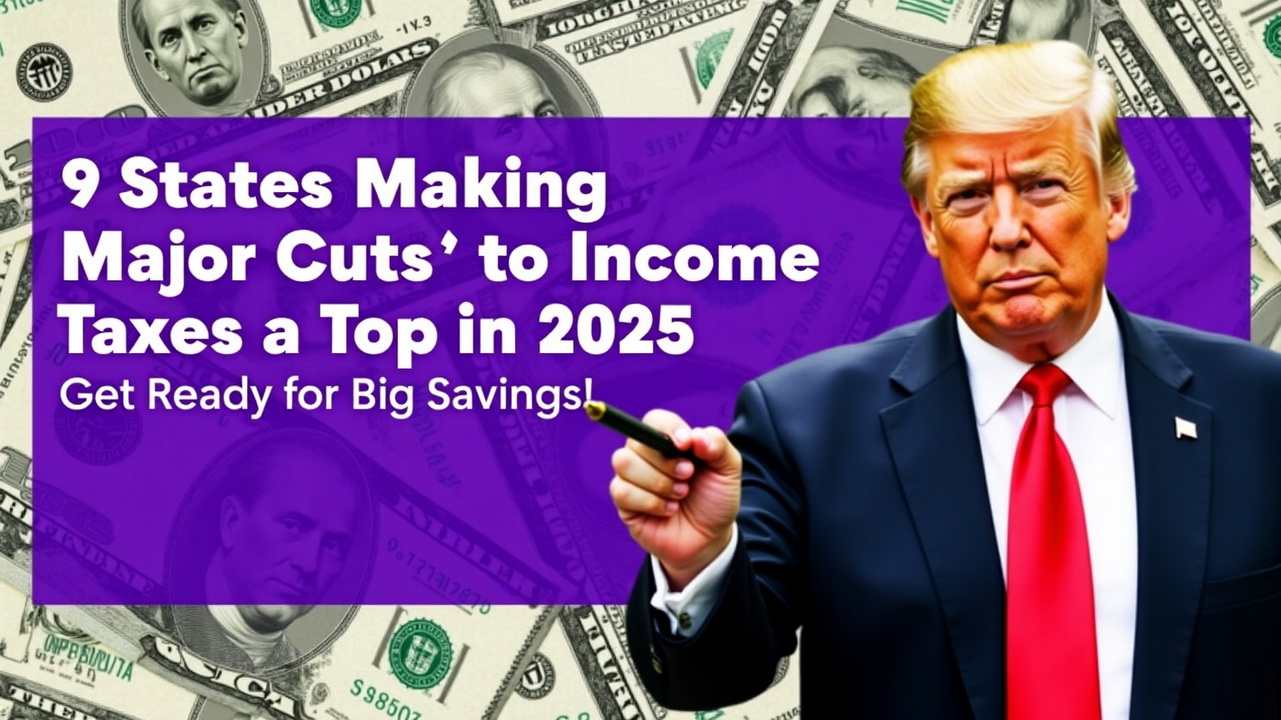9 States Slashing Income Taxes in 2025: As 2025 kicks off, several U.S. states are introducing significant income tax reductions, offering financial relief to residents and sparking conversations about the broader implications. While some see these cuts as a path to economic growth, others raise concerns about potential fiscal challenges. Here’s a breakdown of the states rolling out these changes.
Indiana
Indiana’s individual income tax rate is dropping to 3%, down from 3.05% in 2024. While the savings may seem small—around $33 annually for someone earning $65,000—Governor Eric Holcomb views this as part of a larger plan to ease taxpayer burdens and maintain Indiana’s competitive edge.
Iowa
Iowa is transitioning to a flat income tax rate of 3.8%, replacing the previous top rate of 5.7%. Governor Kim Reynolds credits the state’s budget surplus for enabling this move, which she believes will attract businesses and new residents. The simplified tax structure could bolster Iowa’s appeal.
Louisiana
Louisiana is moving from a graduated tax system to a flat 3% rate, a significant reduction from the prior top rate of 4.25%. Middle-income households earning between $30,000 and $40,000 stand to benefit the most, with their tax bills potentially cut in half. However, a simultaneous increase in the state sales tax—from 4.45% to 5%—has sparked mixed reactions among residents.
Mississippi
Mississippi is reducing its income tax rate from 4.7% to 4.4%, with Governor Tate Reeves expressing a long-term goal of eliminating income taxes entirely. Reeves believes this will position Mississippi to compete with states like Florida and Texas, which have no income tax. However, critics warn that such a move could lead to reduced funding for essential public services.
Missouri
Missouri is continuing its tax-cutting trend, lowering its income tax rate from 4.8% to 4.7%. This marks the fifth reduction under Governor Mike Parson, who credits these cuts for driving job creation and economic growth. Missouri aims to remain an attractive destination for residents and businesses alike.
Nebraska
Nebraska is decreasing its income tax rate to 5.2%, down from 5.84%. Governor Jim Pillen sees this move as a strategy to encourage population growth and make the state more appealing to businesses. By lowering taxes, Nebraska hopes to enhance its competitiveness and economic outlook.
New Mexico
In a surprising turn, Democrat-led New Mexico is also joining the tax-cut wave. Reductions will benefit all income brackets, with the most significant savings going to low- and middle-income earners. For example, a married couple filing jointly could save approximately $303 annually.
North Carolina
North Carolina is lowering its income tax rate from 4.75% to 4.5%, with additional cuts planned for 2026. Legislators emphasize that this gradual approach ensures fiscal responsibility while still delivering relief to taxpayers. The state is focused on balancing economic growth with budgetary stability.
West Virginia
West Virginia is cutting its top income tax rate from 5.12% to 4.82%. Governor Jim Justice has ambitious plans to eventually eliminate personal income taxes, aiming to align West Virginia with no-income-tax states like Florida and Texas.
What This Means for Taxpayers
These reductions reflect a nationwide trend toward lighter tax burdens, with both Republican and Democrat-led states taking part. While the immediate impact is savings for residents, the long-term effects on state budgets and economic growth will be closely monitored in the years to come.
Taxpayers in these states have much to look forward to in 2025, with potential for both individual savings and broader economic benefits.
